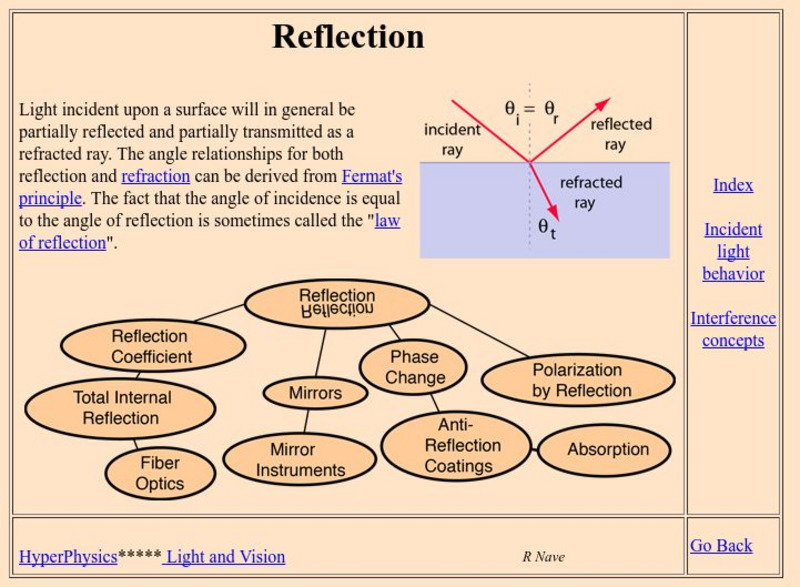Hi, what do you want to do?
Teach Engineering
Electromagnetic Radiation
How can nanoparticles be used in the battle against skin cancer. Class members take on the question as they gather information about electromagnetic radiation, specifically ultraviolet radiation. Pupils learn about the mathematical...
National Nanotechnology Infrastructure Network
Jell-O® Waveguide and Power Loss
Jell-O® can help model the transmission of light through fiber optic cables. Young scientists use the jiggly dessert to make a waveguide to transmit a laser beam from one point to another. Their models help them learn the function...
Curated OER
Optics - The Study of Light
In this optics worksheet, students read about how light can reflect or refract and how lenses and mirrors work. Then students complete 13 matching, 27 fill in the blank, and 8 word problems.
Curated OER
Color Kaleidoscopes
Students construct kaleidoscopes to demonstrate how an image is multiplied by angled mirrors before light rays reach their eyes. They follow step-by-step directions to create a kaleidoscope, and draw illustrations of the repeating...
Curated OER
Reflection of Light
Students experiment with reflections of two plane mirrors placed at a 90 degree angle to see what will be reflected.
Curated OER
Geometrical Optics: Reflection and Refraction of Light
Students define and discus the concepts of wave fronts and rays. In groups, they distinguish between specular and diffuse reflections and use Snell's Law to predict the path of light rays. They calculate the speed of light through...
Curated OER
Light My Fire!
Students draw a diagram that shows the law of reflection. In this physics instructional activity, students investigate the relationship between the angle of incidence and angle of reflection. They explain how light travels as it reflects...
Curated OER
Reflection Experiments
Seventh graders investigate with light rays. In this light lesson, 7th graders determine the angle of reflection using simple materials. They continue the investigation by exploring the theory that light which is not reflected or...
Curated OER
Reflection and Refraction
What is a prism? A place for light waves that commit minor refractions! The thorough resource includes three hands-on investigations covering light reflection and refraction; mirrors, lenses, and images; and optical systems. Subject...
Curated OER
Physical Optics: The Wave Nature of Light
Students are introduced to the wave nature of light. In groups, they discuss Young's experiment and how diffraction and interference demonstrate the wave nature of light. Using examples, they show constructive and destructive...
Curated OER
The Geometry of Real Images
For this math worksheet, students read the examples for using the techniques of mathematical modeling. They draw the angles in order to simulate the reflection of light while using a concave mirror.
Curated OER
Jell-O Optics
Students observe an activity with Jell-O to learn about optics. In this investigative lesson students fill out a handout on the activity that helps them to investigate the index of refraction and the speed of light.
Curated OER
Mirror, Mirror
Students investigate the Law of Reflection and how light travels. In this reflection lesson plan students produce data from their experiment then create a pencil tracing.
Curated OER
Orienting a Photovoltaic Cell
High schoolers explore the optimum angle for orienting a solar collector relative to the rays of incoming sunlight. They review equinoxes, solstices, and various locational ideas before students investigate using meters, light sources,...
Jefferson Lab
Optics: Mirrors and Lenses
Did you see that or did I imagine it? Optical illusions are often created with mirrors and lenses, and here is a presentation that covers many different types of mirrors and lenses and how they work. Flat, concave, and convex mirrors, as...
Cornell University
Resolution—Not Just for the New Year
Experiment with optical resolution using an inquiry-based lesson plan. Young researchers calculate fellow classmates' optical resolutions. They apply the information to understand the inner workings of optical instruments.
Curated OER
Focusing on Lenses
Students explore scientific observations by examining the parts of a microscope. In this optics lesson, students discuss the importance of a focal point and focal distance when utilizing an optical device such as a microscope. Students...
Curated OER
Breaking News English: Cancer
In this cancer worksheet, learners read the article, answer true and false questions, complete synonym matching, complete phrase matching, complete a gap fill, answer short answer questions, answer discussion questions, write, and more...
Physics Classroom
The Physics Classroom: Refraction and the Ray Model of Light: Ray Tracing
In this illustrated physics tutorial, students investigate several of the types of problems that you will have to solve, and learn the task of tracing the refracted ray if given the incident ray and the indices of refraction.
Physics Classroom
The Physics Classroom: Reflection/light Ray Model: Specular/diffuse Reflection
A series of incident rays and their corresponding reflected rays are depicted in the diagrams in this tutorial. Each ray strikes a surface with a different orientation; yet each ray reflects in accordance with the law of reflection.
Georgia State University
Georgia State University: Hyper Physics: Behavior of Incident Light
This site from Georgia State University is an indexing page for several other pages on the topic of reflection. Topics are treated in an understandable manner and utilize meaningful graphics.
Physics Classroom
The Physics Classroom: Reflection/ray Model of Light: Ray Diagrams Convex
Students learn two rules of reflection as it has to do with convex mirrors. These two rules will greatly simplify the task of determining the image locations for objects placed in front of convex mirrors.
Georgia State University
Georgia State University: Hyper Physics: Refraction of Light and Snell's Law
The meaning and cause of refraction--as well as Snell's law of refraction--are discussed. Includes an interactive problem-solving form in which visitors relate angles of refraction to the incident angle and the indices of refraction.
Physics Classroom
The Physics Classroom: Refraction and Ray Model of Light: The Critical Angle
Illustrated examples and interactive practice problems that introduce students to the concept of the critical angle, the angle of incidence that provides an angle of refraction of 90-degrees.

























